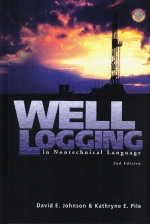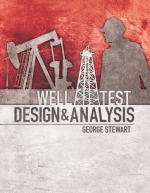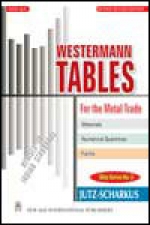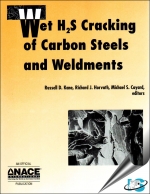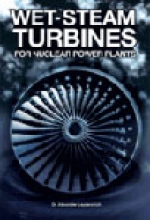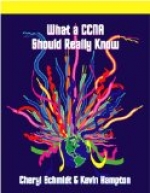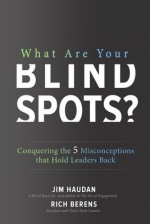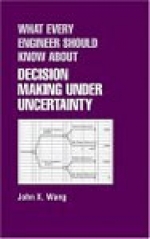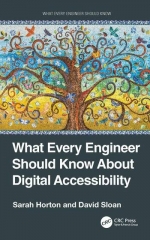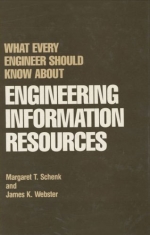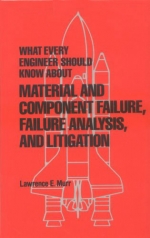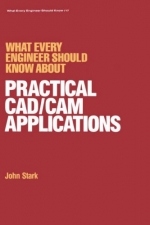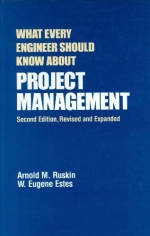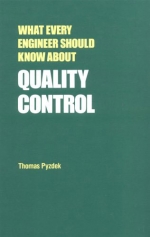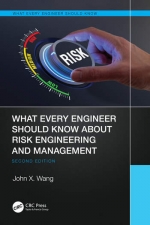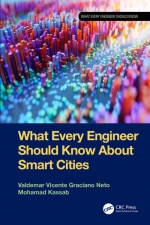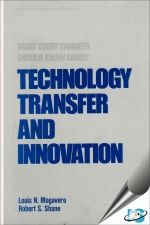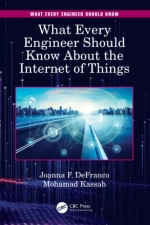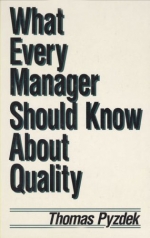Site Breadcrumb
Total Record : 10230
ISBN: 1402037384 / 9781402037382
Year: 2007
Availability: 45-60 days mohan 55555-
Well logging lies at the intersection of applied geophysics, petroleum and geotechnical engineering. It has its roots in the tentative electrical measurements in well bores which were made by the Schlumberger brothers some 80 years ago in the earliest days of systematic petroleum exploration. Today, a variety of specialized instruments is used to obtain measurements from the borehole during, as well as after, the drilling process. This readable and authoritative treatment of the physics of these measurements dispels the "black magic" of well log interpretation by relating them, including those obtained by the latest generation of tools, to rock physics. It offers a thorough exposť of the physical basis of borehole geophysical measurements, as well as an introduction to practical petrophysics -- extracting desired properties from well log measurements.
"Well Logging for Earth Scientists", 2nd edition, is thoroughly revised and extended with three new chapters, many new illustrations and expanded and updated references in each chapter.
Audience:† This graduate level textbook with many exercises can also serve as a useful handbook for practicing earth scientists (geophysicists, geologists, or petroleum engineers).
...
ISBN: 0878148256 / 9780878148257
Year: 2006
Availability: In Stock mohan 55555-
An update of the PennWell classic nontechnical guide to logging techniques, this text provides an easy-to-understand overview of the technically complex subject of well logging. This book will be very useful to bankers, landmen, geology and engineering technicians, clerks, secretaries, and others who need a basic understanding of well logs to perform their jobs.
†
...
ISBN: 1593702310 / 9781593702311
Year: 2011
Availability: In Stock mohan 55555-
Petroleum engineers face the daily challenges of designing and testing wells. Finding the right technical data guide for conducting these tasks can be daunting, and so renowned petroleum engineer George Stewart has written the comprehensive volume Well Test Design & Analysis, filled with advanced information unparalleled on a variety of wellbore topics. From ascertaining accurate reservoir descriptions, to the intricacies of designing a horizontal well program, the author covers every topic in detail. The volume includes a CD containing Chapters 16 - 20.
n 555555...
ISBN: 8122417302 / 9788122417302
Year: 2015
Availability: Out of Stock mohan 55555-
Materials-Numerical Quantities-Forms-Tables compiled for the metal trade are dedicated to vocational school as well as to practical usage at the job site. Although the tables have been compiled for use primarily by the apprentice, the specialized worker will also find them useful. Every effort has been made to shorten the sometimes tedious operations and the arrangement of subject matter is such that its contents are readily available to the practical man.
n 555555...
| Buy This Item |
| List Price: ` 225 |

Notify Me |
ISBN: 1877914975 / 9781877914973
Year: 1996
Availability: Out of Stock mohan 55555-
This publication brings together a broad range of published papers specifically addressing cracking of steels and weldments resulting from absorbed hydrogen when exposed to wet H2S environments. It includes 72 classic papers from NACE and other sources covering published literature from 1948 to 1993. Other non-NACE sources include books published by the American Petroleum Institute, Materials Properties Council, and the Society of Petroleum Engineers. Introductions to the seven sections discuss the evolution of technology in each of these areas: wet H2S cracking in refinery service, wet H2S cracking in oil and gas production and pipelines, sulfide stress cracking/hydrogen embrittlement cracking in high-strength steels, environmental and metallurgical factors in hydrogen-induced cracking, hydrogen-related cracking in sour amine systems, laboratory testing methods for wet H2S cracking, and inspection of wet H2S equipment.
n 555555...
| Buy This Item |
| List Price: $ 185 |

Notify Me |
ISBN: 1593700326 / 9781593700324
Year: 2005
Availability: In Stock mohan 55555-
Wet-Steam Turbines for Nuclear Power Plants presents a survey of modern wet-steam turbines, addressing both full-speed and half-speed units. This book explains in clear, but detailed language the design features of the world’s leading wet-steam turbine manufacturers, including the subtleties of operation of these complex components. It also gives readers comprehensive background on typical repairs and maintenance planning. Mainly addressing issues concerned to owners and operators of nuclear power plants, university professors and engineering students will benefit from the thorough review of nuclear wet-steam turbines. Discussions include turbines between 200 and 1,500 MW and greater, operated at nuclear power plants with light-water and heavy-water reactors, such as PWR, BWR, PHWR, CANDU, and their advanced modifications. These turbines are fed with saturated steam, and most of their stages work with wet steam.
While this book focuses on the understanding of turbine design, it also covers the peculiarities of operation, spotting possible imperfections, and the distinct advantages of refurbishing older turbines to gain increased output, greater reliability and efficiency. Readers will gain knowledge of design decisions by world’s main turbine producers: ALSTOM, General Electric, Hitachi, LMZ, Mitsubishi Heavy Industries, Skoda, Siemens, Toshiba and Turboatom, as well as possibilities for improvement of aging turbines currently in service. This is the first book in 20 years on this highly technical.
...
ISBN: 1576761207 / 9781576761205
Year: 2003
Availability: Out of Stock mohan 55555-
What a CCNA Should Really Know is geared toward the CCNA (Cisco Certified Network Associate). Some of the best features of the book include the coverage of difficult subjects in a step-by-step manner, good graphics to illustrate concepts, reinforcement questions, hands-on exercises in each chapter, and it is written by two teachers (who understand the value of such a book in this field). The book is for CCNAs who are looking to learn practical skills needed in the job market.
n 555555...
| Buy This Item |
| List Price: $ 61 |

Notify Me |
ISBN: 0872637298 / 9780872637290
Year: 2004
Availability: 45-60 days mohan 55555-
Whenever managers start to think about how to promote ideas, the question of rewards comes up. The most common reward schemes - percentage rewards based on the value of each idea - substantially increase the cost, time and effort needed to evaluate ideas, and create a host of unanticipated disincentives for people to offer ideas. This video discusses what motivates people to offer ideas, and what types of recognition and rewards work.
n 555555...
ISBN: 1260129233 / 978126012923
Year: 2018
Availability: Send us an Email (info@standardsmedia.com) for more details mohan 55555-
Uncover your blind spots and reset your leadership approach for long-lasting success in any business†Far too many business leaders today are using outdated practices to engage and motivate their people?and they’re failing miserably. Truly resilient, thriving organizations are those that are purpose driven and focus on more than pure profits. Purpose, or an underlying company philosophy, not only drives strategic change, but also encourages customer loyalty and employee engagement. In order to succeed, leaders must be willing to discard old ways of thinking and detrimental business habits—and recognize their blind spots.†
Authors Jim Haudan and Rich Berens identify the five most common leadership blind spots that hamper success: Purpose, Story, Engagement, Trust, and Truth. They take you straight into the board room of well-known leadership teams to illustrate how these blind spots play out and the impact they have on organizations. You’ll learn how to identify and overcome your own blind spots and embrace positive, forward-thinking new practices.†
What Are Your Blind Spots equips you with the tools needed for a personal leadership reset. You’ll discover how to increase engagement, productivity, and growth in your own organization. This is an invaluable guide for executives, managers, team leaders, and human resource professionals looking for an effective way to engage and motivate employees at every level of an organization
...
ISBN: 0768009758 / 9780768009750
Year: 2003
Availability: 45-60 days mohan 55555-
This book provides an introduction to the role, value, scope and the unique contributions the field of human factors can bring to the design process for all products. Aimed at the engineer and manager with no formal training in the life and social sciences, it is not intended to train the methods of human factors, but rather to provide knowledge that will enable engineers and managers to determine if including human factors in the planning and execution of product design is justified.
Chapters include:
- Reasons Engineers Provide for Limiting Emphasis on Human Factors
- The Academic Disciplines Supporting Human Factors
- Human Factors Engineering
- and more
...
ISBN: 0824708083 / 9780824708085
Year: 2002
Availability: In Stock mohan 55555-
What Every Engineer Should Know About Decision Making Under Uncertainty presents new paradigms for engineering decision making....covers customer-focused engineering decision making....details spreadsheet simulation methods to help avoid bias and habitual behavior......discusses continuous quality improvement versus business reengineering processes....illustrates information value in decision making during uncertainty.....analyzes capital budgetting......discusses the accuracy of sample estimates...and presents practical case studies from various engineering disciplines and shows how to tailor the illustrated methods for different applications.
n 555555...
ISBN: 0824784855 / 9780824784850
Year: 1991
Availability: In Stock mohan 55555-
This practical volume gives basic information about the structure, properties, applications, processing, and testing of plastics; new and traditional plastics materials; considers what plastics plants will be like in the future; and provides data on the electrical characteristics of various materials and physical property comparisons for many plastics polymers.
n 555555...
ISBN: 1032263865 / 9781032263861
Year: 2024
Availability: 15-30 days mohan 55555-
Accessibility is a core quality of digital products to be deliberately addressed throughout the development lifecycle. What Every Engineer Should Know About Digital Accessibility will prepare readers to integrate digital accessibility into their engineering practices. Readers will learn how to accurately frame accessibility as an engineering challenge so they are able to address the correct problems in the correct way.
Illustrated with diverse perspectives from accessibility practitioners and advocates, this book describes how people with disabilities use technology, the nature of accessibility barriers in the digital world, and the role of engineers in breaking down those barriers. Accessibility competence for current, emerging, and future technologies is addressed through a combination of guiding principles, core attributes and requirements, and accessibility%u2011informed engineering practices.
FEATURES
- Discusses how technology can support inclusion for people with disabilities and how rigorous engineering processes help create quality user experiences without introducing accessibility barriers
- Explains foundational principles and guidelines that build core competency in digital accessibility as they are applied across diverse and emerging technology platforms
- Highlights practical insights into how engineering teams can effectively address accessibility throughout the technology development lifecycle
- Uses international standards to define and measure accessibility quality
Written to be accessible to non%u2011experts in the subject area, What Every Engineer Should Know About Digital Accessibility is aimed at students, professionals, and researchers in the field of software engineering.
n 555555...
ISBN: 082477244X / 9780824772444
Year: 1984
Availability: In Stock mohan 55555-
This practical, easy-to-use work brings all widely used sources-from periodicals and technical papers to the newest information formats available-to your fingertips, providing quick, efficient, and economical access to the information you need.
The only up-to-date resource designed specifically for engineers, this convenient guide includes the lates information technology, such as electronic databases, software, and audio-visual materials....provides coverage of major engineering libraries, as well as 33 information analysis centers that offer a variety of specialized services....and supplies current information on printed and computer searchable indexes, including ways to obtain complete copies of documents.
...
What Every Engineer Should Know About Material and Component Failure, Failure Analysis, & Litigation
ISBN: 0824777328 / 9780824777326
Year: 1986
Availability: In Stock mohan 55555-
This unique guide provides a fundamental overview of the principles of materials science and engineering (including the role of crystal structures and crystal imperfections in determining and controlling the properties of materials)...and integrates these fundamentals into a description of how materials, particularly metals, commonly fail, and how this failure can be examined in detail using modern analytical techniques. Nine case histories illustrate the litigation of liability claims that result from material and component failures, and demonstrate exactly how materials fundamentals and analytical tools are actually utilized by engineering experts and lawyers in litigating failure liability.
This vital work will prove an indispensable resource for industrial, mechanical, manufacturing, and materials engineers; attorneys involved in product liability litigation, or litigating cases involving failure or suspected failure of materials.
...
ISBN: 0824775937 / 9780824775933
Year: 1986
Availability: In Stock mohan 55555-
This authoritative book-discussing CAD/CAM in detail from the user’s rather than the vendor’s point of view-provides the valuable information engineers and managers need for optimal CAD/CAM implementation and use. It introduces CAD/CAM hardware and software, and demonstrates how to select a CAD/CAM solution for your company’s specific requirements……explains how to implement a CAD/CAM system, with special attention to training and education, and with useful checklists…..describes ongoing systems…..presents an informative overview of CAD/CAM’s industrial use….and details case studies of CAD/CAM applications, representing a broad range of companies throughout the world, in various industrial sectors, at different stages of CAD/CAM use.
Complete with a glossary that clearly defines all CAD/CAM terminology, this essential reference source is mandatory reading for mechanical, manufacturing, automotive and aerospace engineers and managers; CAD/CAM system vendors; computer manufacturers.
...
ISBN: 0824789539 / 9780824789534
Year: 1994
Availability: In Stock mohan 55555-
This invaluable Second Edition describes the project manager's entire range of responsibilities from initial planning to directing personnel, controlling work, and reporting results.
†
...
ISBN: 0824779665 / 9780824779665
Year: 1989
Availability: In Stock mohan 55555-
Considerations of Quality play a prominent role in all fields;particularly with recently focused attention on issues of consumerism, product and professional liability, and government regulation. American industries must improve quality if they are to remain competitive in world markets.
n 555555...
ISBN: 1032439823 / 9781032439822
Year: 2023
Availability: 2 to 3 weeks mohan 55555-
Completely updated, this new edition uniquely explains how to assess and handle technical risk, schedule risk, and cost risk efficiently and effectively for complex systems that include Artificial Intelligence, Machine Learning, and Deep Learning. It enables engineering professionals to anticipate failures and highlight opportunities to turn failure into success through the systematic application of Risk Engineering. What Every Engineer Should Know About Risk Engineering and Management, Second Edition discusses Risk Engineering and how to deal with System Complexity and Engineering Dynamics, as it highlights how AI can present new and unique ways that failures can take place. The new edition extends the term "Risk Engineering" introduced by the first edition, to Complex Systems in the new edition. The book also relates Decision Tree which was explored in the first edition to Fault Diagnosis in the new edition and introduces new chapters on System Complexity, AI, and Causal Risk Assessment along with other chapter updates to make the book current.
Features
- Discusses Risk Engineering and how to deal with System Complexity and Engineering Dynamics
- Highlights how AI can present new and unique ways of failure that need to be addressed
- Extends the term "Risk Engineering" introduced by the first edition to Complex Systems in this new edition
- Relates Decision Tree which was explored in the first edition to Fault Diagnosis in the new edition
- Includes new chapters on System Complexity, AI, and Causal Risk Assessment along with other chapters being updated to make the book more current
The audience is the beginner with no background in Risk Engineering and can be used by new practitioners, undergraduates, and first-year graduate students.
n 555555...
ISBN: 1032391367 / 9781032391366
Year: 2024
Availability: 2 to 3 weeks. mohan 55555-
Get ready to be at the forefront of the future of urban development!
As cities continue to rapidly grow, the demand for sustainable and efficient infrastructure becomes more urgent. That’s where What Every Engineer Should Know About Smart Cities comes in, offering a comprehensive guide to the concepts and technologies driving the transformation of our cities.
Delve into the world of smart cities and discover how information and communication technologies are revolutionizing urban environments. With clear definitions and a focus on real-world applications, this book explores the benefits and challenges of smart cities. It also highlights interdisciplinary topics such as smart buildings, autonomous cars, and urban emergency management systems.
This book is not just a theoretical exploration of smart cities. It goes beyond that by providing an in-depth look at the key technologies that are essential to creating smart cities. From the Internet of Things and blockchain to digital twins and modeling and simulations, readers will gain a solid understanding of the foundational technologies that make smart cities possible. With detailed discussions and real-world examples of smart mobility, smart health, smart education, and smart agribusiness, readers will gain a deep understanding of the requirements and characteristics that engineers need to contribute to the development of smart cities.
Whether you’re an engineer looking to expand your knowledge, a city planner seeking to understand the latest trends, or simply someone interested in the future of urban living, What Every Engineer Should Know About Smart Cities is the ultimate guide to unlocking the potential of smart cities for sustainable urban development and improved quality of life.
...
ISBN: 0824718631 / 9780824718633
Year: 1982
Availability: Out of Stock mohan 55555- n 555555
...
| Buy This Item |
| List Price: ` 10968 |

Notify Me |
ISBN: 0367858789 / 9780367858780
Year: 2022
Availability: In Stock mohan 55555-
Internet of Things (IoT) products and cyber-physical systems (CPS) are being utilized in almost every discipline and there continues to be significant increases in spending on design, development, and deployment of IoT applications and analytics within every domain, from our homes, schools, government, and industry. This practical text provides an introduction to IoT that can be understood by every engineering discipline and discusses detailed applications of IoT. Developed to help engineers navigate this increasingly important and cross-disciplinary topic, this work:
- Offers research-based examples and case studies to facilitate the understanding of each IoT primitive
- Highlights IoT’s connection to blockchain
- Provides and understanding of benefits and challenges of IoT and its importance to a variety of engineering disciplines
Written to be accessible to non-experts in the subject, What Every Engineer Should Know About the Internet of Things communicates the importance of this technology and how it can support and challenge all interrelated actors as well as all involved assets across many domains.
n 555555...
ISBN: 0367451573 / 9780367451578
Year: 2019
Availability: 2 to 3 weeks mohan 55555-
This book is designed to serve the needs of engineers, technicians, designers, and technologists concerned with standards, materials, design, and elementary formulas for the selection, procurement, and quality control of threaded fasteners.
n 555555...
ISBN: 0824784014 / 9780824784010
Year: 1991
Availability: In Stock mohan 55555-
This book provides the vital elements from the vast body of knowledge of quality control-offering managers a timely, accessible account of this important subject.
Supplying a thorough reading list that facilitates further investigation of a topic, this practical volume discusses underlying concepts of critical quality techniques.....covers the Taguchi approach in nontechnical terms.....describes the mechanics of the Malcolm Baldrige National Quality Award and strategies of past winners...details the Department of Defense’s implementation of total quality management (TQM)....focuses on quality function deployment (QFD)....and more!
What Every Manager Should Know About Quality is a working reference for managers and supervisors in quality, manufacturing, engineering, and purchasing; managers of service businesses.
...
ISBN: 1259027694 / 9781259027697
Year: 2012
Availability: Out of Stock mohan 55555-
One of the most influential business coaches of our time, Marshall Goldsmith helps businesspeople pinpoint career-harming behaviors, understand why they engage in them and, most importantly?stop. His book What Got You Here Won?t Get You There wasn?t just a runaway bestseller, it has helped untold numbers dramatically improve their careers and personal lives.
Now, Goldsmith teams up with leading sales thought leaders Don Brown and Bill Hawkins to help you break the habits that specifically damage sales relationships. This dream team?s combined clients have increased their sales from 5 to 30 percent?and their gross profit up to 50 percent! In short, their approach works.
What Got You Here Won't Get You There in Sales! provides simple-to-use tools for maintaining and leveraging quality personal connections by doing something much easier than learning new behaviors: simply stopping old ones. When dealing with your customers, do you:
- Needlessly verbalize and execute every possible step in the sales process?
- Repeatedly initiate communication for no apparent purpose?
- Attempt to verbally ?one up? your customer in conversation?
The authors name 16 bad habits in all, and they provide proven techniques for reversing their negative effects by putting them to rest for good. There is no profession that depends more on good relationships than sales. And there?s no one more qualified to coach you to create and nurture productive sales relationships than these three authors.
You do have the power to change. Let Goldsmith, Brown, and Hawkins help you kick your bad habits to improve relationships, increase sales, and enjoy a more fulfilling, enriching career.
...
| Buy This Item |
| List Price: ` 451 |

Notify Me |



